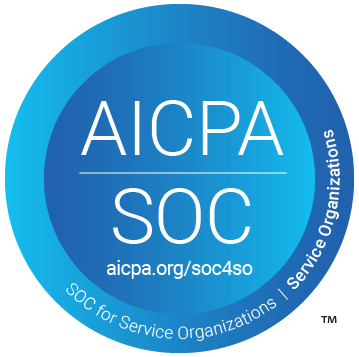What is a UPRN?
What is a UPRN?
UPRN stands for Unique Property Reference Number. It is a unique identifier assigned to every addressable location or property in the United Kingdom. The UPRN is used to provide a standardised reference for a specific property, regardless of any changes to the property's address or other details.
The UPRN is a 12-digit numerical code that remains constant throughout the lifespan of a property. It is used by various organisations and government bodies involved in property management, such as local authorities, utility companies, emergency services, and land registries. The UPRN facilitates accurate and efficient communication and data sharing related to properties.
By using the UPRN, different systems and databases can be linked together, allowing for better coordination and integration of information. It helps ensure that data about a property, such as its location, ownership, and services, can be easily accessed and updated across various platforms.
The Allocation of UPRNs
1. Creation and initial allocation:
- When a new property or addressable location is created, such as a new building or subdivision, the local authority assigns a UPRN to that property. This initial allocation is often done by the local authority's Geographic Information System (GIS) or Address Management team. The UPRN is assigned based on a unique identifier system established by the local authority or a standardised national scheme.
2. Data maintenance:
- Local authorities are responsible for maintaining and updating the UPRN records as changes occur. This includes updating UPRNs when properties undergo modifications, demolitions, or new constructions. The local authority's Address Management team or similar department is typically responsible for this task. They ensure that accurate and up-to-date information is maintained for each property, including changes in addresses, property boundaries, and other relevant details.
3. Collaboration and data sharing:
- sharing UPRN data with utility companies, emergency services, land registries, and other stakeholders involved in property management. By sharing consistent UPRN data, it becomes easier to integrate information and coordinate services across different systems.
4. National coordination:
- The national coordination of UPRNs and related address management is facilitated by organisations such as GeoPlace in England and Wales, the Improvement Service in Scotland, and Land and Property Services in Northern Ireland. These organisations work closely with local authorities to establish and enforce standards, guidelines, and best practices for UPRN allocation and management across the country.
Overall, the allocation and management of UPRNs involve a collaborative effort between local authorities, national coordinating organisations, and various stakeholders to ensure accurate identification and tracking of properties in the United Kingdom.
The Permanence of UPRNs
UPRNs are intended to provide a permanent and unique identifier for each addressable property in the United Kingdom. The goal is to ensure that the UPRN remains constant throughout the lifespan of a property, regardless of any changes to its address or other details. However, it's important to note that in practice, there can be some instances where UPRNs may change or be subject to updates. Here are a few factors that can influence the permanence of UPRNs:
1. Address changes:
- Occasionally, properties undergo address changes due to various reasons such as street renaming, property renumbering, or the creation of new addresses. In such cases, the UPRN associated with a property may need to be updated to reflect the new address.
2. Property modifications:
- If significant modifications are made to a property, such as a substantial extension or conversion, it may require reassignment of a new UPRN to accurately represent the changed property. This ensures that the UPRN aligns with the updated characteristics and boundaries of the property.
3. Property demolitions and new constructions:
- When a property is demolished and replaced with a new structure, a new UPRN is typically allocated to the newly constructed property. This helps distinguish the new property from the old one and maintains accurate records
4. Administrative updates:
- There might be administrative updates or corrections related to UPRNs due to data errors, duplicate entries, or other issues. These updates aim to ensure the accuracy and integrity of the UPRN database.
While the intention is for UPRNs to remain permanent, the practical realities of changes to addresses, property modifications, and administrative requirements may result in updates or changes to UPRNs. However, the objective is always to maintain a consistent and reliable reference number for each property to facilitate effective data management and coordination among different organisations.
UPRNs for Non-Buildings
UPRNs can also be used to identify non-building locations in addition to traditional buildings. Here's how UPRNs are utilised for non-building locations:
1. Land and open spaces:
- UPRNs can be assigned to land parcels and open spaces such as parks, recreational areas, vacant lots, and agricultural fields. These UPRNs help in identifying and managing these locations, facilitating land administration, planning, and environmental management.
2. Infrastructure and utilities:
- Non-building infrastructure elements like utility substations, telecommunications equipment, power lines, water treatment facilities, and sewage pumping stations can be assigned UPRNs. This enables precise identification and tracking of these infrastructure assets, aiding in maintenance, asset management, and service provision.
3. Points of interest:
- UPRNs can be assigned to points of interest (POI) such as tourist attractions, historical sites, landmarks, and commercial areas. Assigning UPRNs to these non-building locations helps with navigation, mapping, tourism, and urban planning, allowing for efficient information retrieval and analysis.
4. Transportation infrastructure:
- UPRNs can be used for transportation-related assets like bridges, tunnels, railway stations, bus stops, airports, and seaports. This enables effective management, maintenance, and coordination of transportation infrastructure, supporting travel planning, logistics, and emergency services.
5. Natural features:
- UPRNs can be allocated to natural features such as lakes, rivers, mountains, forests, and nature reserves. Assigning UPRNs to these non-building locations aids in environmental management, conservation efforts, and outdoor recreation.
By extending the use of UPRNs beyond buildings, a comprehensive system can be established to uniquely identify and manage various types of locations and assets. This enables better coordination, data integration, and efficient provision of services across different sectors and organisations.
UPRNs for Multiple Addressable Locations
UPRNs are typically assigned to individual addressable locations, which are usually associated with a single property or building. However, there are situations where multiple addressable locations may exist within a larger property or complex. In such cases, specific guidelines and practices may be followed to assign UPRNs. Here's an overview:
1. Subdivisions or units within a property:
- In some cases, a single property may contain multiple addressable units or subdivisions—for example, an apartment building or a shopping centre with multiple units or shops. Each individual unit or subdivision within the property can be assigned a unique UPRN to differentiate it from the others. This allows for accurate identification and management of each distinct addressable location within the larger property.
2. Individual buildings within a complex:
- In larger property complexes, such as universities, hospitals, or industrial estates, there may be multiple individual buildings with their own addressable locations. In such cases, each building is typically assigned a separate UPRN, enabling precise identification and management of each building within the complex.
3. Floors or levels within a building:
- In cases where a building has multiple floors or levels, each floor can be considered an addressable location and assigned a unique UPRN. This can be particularly useful for large office buildings, hotels, or residential complexes.
4. Sub-addresses or sub-locations:
- In certain situations, a single addressable location may have sub-addresses or sub-locations within it—for example, a property with multiple entrance points, wings, or sections. In such cases, specific sub-addresses or sub-locations can be assigned unique UPRNs to maintain clarity and accuracy in identification.
The allocation and management of UPRNs for multiple addressable locations within a property or complex aim to provide a comprehensive and precise identification system. This facilitates efficient communication, data management, and service delivery, ensuring that each addressable location within the larger property can be uniquely identified and referenced.
How to Look Up a UPRN
The process of looking up a UPRN can vary depending on the specific system or database used. However, here is a general outline of the steps involved in looking up a UPRN:
1. Identify the source or database:
- Determine which source or database contains the UPRN you are looking for. UPRNs are commonly used and managed by various organisations, including local authorities, utility companies, emergency services, and land registries. Identify the relevant organisation or database that holds the UPRN data you need.
2. Access the UPRN lookup tool or database:
- Once you have identified the appropriate source, access the UPRN lookup tool or database associated with that source. This could be an online portal, a dedicated software application, or a database system provided by the organisation.
3. Input search criteria:
- Depending on the available search options, enter the relevant search criteria to retrieve the desired UPRN. The search criteria may include information such as the property address, postcode, property name, or any other relevant details associated with the property or location.
4. Perform the search:
- Initiate the search based on the provided criteria. The system will process the search query and retrieve the UPRN associated with the specified property or location.
5. Review the results:
- Once the search is completed, the system will display the results, which typically include the UPRN and related information about the property or location. This may include details like the address, coordinates, ownership, and other relevant data associated with the UPRN.
6. Access additional information:
- Depending on the capabilities of the UPRN lookup system, you may have the option to access additional information or related records associated with the UPRN. This could include historical data, property characteristics, utility connections, or any other relevant information.
It's important to note that the specific steps and tools involved in looking up a UPRN can vary depending on the organisation or system being used. Therefore, it's recommended to consult the specific UPRN lookup tool or contact the relevant organisation to obtain accurate and up-to-date information retrieval procedures.
UPRN Format
A UPRN in the United Kingdom follows a specific format that consists of a 12-digit numerical code. The format of a UPRN is as follows:
NNNNNNNNNNNN
Each "N" represents a digit from 0 to 9, resulting in a 12-digit numerical code. The UPRN is designed to be a unique identifier for each addressable property in the UK, regardless of changes to the property's address or other details. The 12-digit code ensures that each UPRN is distinct and allows for efficient identification and referencing of properties in various databases and systems.
UPRNs and Data Privacy
The use of UPRNs in the context of data privacy primarily revolves around the potential implications associated with the handling and processing of personal information. Here are some considerations:
1. Address-related information:
- UPRNs are often linked to address-related information, which can include personal data such as residential addresses or business addresses. As such, organisations using UPRNs must ensure that they handle this data in compliance with relevant data protection laws and regulations, such as the General Data Protection Regulation (GDPR) in the European Union.
2. Data security:
- Organisations managing UPRNs should implement appropriate data security measures to protect the confidentiality and integrity of the associated data. This includes measures like encryption, access controls, regular data backups, and robust cybersecurity practices to prevent unauthorized access or data breaches that could compromise personal information.
3. Data minimisation:
- Organisations should practice data minimisation when using UPRNs, ensuring that they collect and retain only the necessary personal data required for legitimate purposes. This helps mitigate privacy risks by limiting the exposure of personal information.
4. Consent and transparency:
- Individuals should be informed about the collection and use of their personal data linked to UPRNs. Organisations should obtain appropriate consent from individuals when processing their personal information and provide clear and transparent privacy notices that explain how the data will be used, who will have access to it, and the individual's rights regarding their data.
5. Data sharing and third-party access:
- When sharing UPRN-related data with third parties, organisations must ensure they have appropriate data sharing agreements in place to safeguard the privacy and confidentiality of the data. They should also ensure that third parties comply with applicable data protection regulations and maintain adequate security measures.
6. Anonymisation and pseudonymisation:
- Where possible, organisations may choose to anonymise or pseudonymise UPRN-related data to further protect individual privacy. This involves removing or replacing identifying information to ensure that individuals cannot be directly identified from the data.
It is essential for organisations to conduct thorough privacy impact assessments and adopt privacy-by-design principles when using UPRNs to ensure compliance with data protection requirements and protect individuals' privacy rights.
Implications of UPRNs in the Context of GDPR
UPRNs can be used to identify properties without directly including personal data, making them valuable tools for maintaining privacy in data handling. Here's how UPRNs can contribute to privacy:
1. Separation of personal and property data:
- By using UPRNs, property-related information can be detached from personal data, such as names or contact details. UPRNs serve as unique identifiers solely associated with properties, allowing for the management and analysis of property-related data without the need to expose personal information.
2. Data anonymisation:
- When sharing or analysing property-related data, UPRNs can be used as part of a broader anonymisation process. Personal identifiers are removed or replaced with UPRNs, reducing the risk of identifying individuals based on property-related information alone. This helps protect the privacy of individuals while still enabling effective data analysis and research.
3. Aggregate data analysis:
- UPRNs allow for the aggregation and analysis of property-related data at a broader level, without focusing on specific individuals. This helps generate insights and understand trends without compromising individual privacy. For example, UPRNs can be used to analyse energy consumption patterns across properties or assess transportation needs in a particular area.
4. Consent-based data handling:
- When collecting property-related data, organisations can seek consent from individuals based on the purpose of data collection. By clearly explaining how UPRNs will be used and ensuring that personal information is not tied directly to UPRNs, individuals can make informed decisions regarding data sharing while maintaining their privacy preferences.
5. Secure data management:
- UPRNs can be utilised within robust data management systems that incorporate privacy-enhancing measures. Organisations can implement strict access controls, encryption, and other security measures to safeguard UPRN-related data, ensuring that only authorised personnel can access and process the information.
By leveraging UPRNs to identify properties without directly involving personal data, privacy risks can be minimised, and data handling practices can align with data protection regulations. It enables organisations to derive insights and conduct analysis while respecting individual privacy rights and maintaining the confidentiality of personal information.
UPRNs in Systems & Applications
UPRNs are used in various modern technologies and applications to enhance data management, analysis, and service delivery. Here are some examples of how UPRNs are used in modern technology:
1. Geographic Information Systems (GIS):
- UPRNs are integrated into GIS platforms to accurately locate and visualise properties on maps. GIS tools utilise UPRNs to link property-related data, such as addresses, boundaries, and attributes, enabling efficient spatial analysis, planning, and decision-making.
2. Address management systems:
- UPRNs are a fundamental component of address management systems used by local authorities and organisations. These systems leverage UPRNs to maintain accurate records of addresses, facilitate address matching and verification, and streamline processes like property tax assessment, mail delivery, and emergency response.
3. Smart cities and IoT applications:
- UPRNs play a crucial role in smart city initiatives and Internet of Things (IoT) applications. By assigning UPRNs to various assets such as streetlights, waste bins, parking spaces, and sensors, cities can efficiently manage and monitor infrastructure, optimise resource allocation, and provide better services to residents.
4. Property databases and registries:
- UPRNs are utilised in property databases and registries to uniquely identify and track properties. This facilitates effective property management, land administration, and land registration processes. UPRNs enable easy data integration and sharing among stakeholders involved in property-related transactions and services.
5. Data integration and interoperability:
- UPRNs serve as a common reference point for integrating and linking property-related data across different systems and databases. They enable interoperability among various applications, allowing organisations to share and exchange property information accurately and efficiently.
6. Data analytics and insights:
- UPRNs are leveraged in data analytics and modelling to derive insights and patterns related to properties and their characteristics. By analysing UPRN-associated data, organisations can gain valuable insights into demographic trends, infrastructure needs, resource utilisation, and urban planning.
7. Emergency services and navigation:
- UPRNs are utilised by emergency services, navigation systems, and geolocation-based applications to precisely identify and locate properties during emergencies or when providing navigation directions. UPRNs help ensure accurate and prompt responses in emergency situations.
Overall, UPRNs are utilised in modern technology to improve data management, enhance service delivery, enable data integration, and support decision-making processes across various sectors, including urban planning, property management, transportation, and emergency services
How to Integrate UPRNs into GIS Solutions, Databases and APIs
Integrating UPRNs into GIS solutions, databases, and APIs offers several benefits for accurate spatial analysis, data management, and service delivery. Here are some examples of how UPRNs can be integrated into these systems:
1. Geocoding and address matching:
- UPRNs can be used in geocoding processes to convert addresses into precise geographic coordinates. GIS tools can integrate UPRNs to match addresses with corresponding UPRNs, ensuring accurate spatial referencing and enabling efficient data retrieval and analysis.
2. Spatial analysis and querying:
- By incorporating UPRNs into GIS tools and databases, users can perform spatial queries and analysis based on the unique identifiers. This allows users to retrieve property-related information, conduct spatial joins, identify relationships between properties, and perform geospatial analysis with ease.
3. Data linkage and integration:
- UPRNs provide a consistent and reliable link between different datasets. GIS tools and databases can integrate UPRNs as a key identifier, enabling seamless data linkage and integration. This allows for the aggregation of property-related data from various sources and the creation of comprehensive spatial databases.
4. Routing and navigation:
- UPRNs can be integrated into navigation systems and APIs to provide accurate routing and directions. By associating UPRNs with specific properties, navigation applications can guide users to precise locations and optimise travel routes based on property data, including points of interest or specific destinations.
5. Property information retrieval:
- GIS solutions and databases can utilise UPRNs as a unique identifier to retrieve detailed property information. By linking UPRNs with property attributes such as ownership, utilities, land use, or planning permissions, users can access comprehensive property-related data with a simple UPRN query.
6. Data sharing and interoperability:
- UPRNs facilitate data sharing and interoperability among different GIS tools, databases, and APIs. Organisations can exchange property-related data using UPRNs as a common reference point, enabling efficient data integration and synchronization between systems.
7. Visual representation and cartography:
- UPRNs can be used in GIS databases to visually represent properties on maps and enable thematic mapping based on property attributes. By associating UPRNs with geographic coordinates and attribute data, GIS applications can generate maps that display property boundaries, classifications, or other relevant information.
Integrating UPRNs into GIS platforms, databases, and APIs enhances spatial data management, analysis, and visualisation, enabling efficient property-related workflows and supporting a wide range of applications in urban planning, emergency response, infrastructure management, and more.
The Role of UPRN in Public Services
UPRNs can be used extensively in various public services to enhance efficiency, accuracy, and coordination. Here are some examples of how UPRNs can be utilized in public services:
1. Address verification and validation:
- UPRNs can be used in public services to verify and validate addresses. By integrating UPRNs into address management systems, public service agencies can ensure accurate address data, reducing errors and improving service delivery.
2. Emergency services:
- UPRNs play a crucial role in emergency services. Emergency response teams can utilise UPRNs to precisely identify and locate properties during emergency situations, enabling faster and more accurate responses. UPRNs facilitate efficient coordination between emergency services and help ensure that assistance reaches the right location promptly.
3. Public infrastructure management:
- UPRNs can be used to manage public infrastructure efficiently. Local authorities can associate UPRNs with infrastructure assets such as streetlights, waste bins, public transport stops, and utilities. This enables effective asset management, maintenance scheduling, and targeted infrastructure improvements.
4. Planning and development:
- UPRNs are valuable in planning and development processes. Local authorities and urban planners can use UPRNs to track properties, analyse land use patterns, monitor development activities, and make informed decisions about infrastructure development, zoning, and urban regeneration.
5. Housing and social services:
- UPRNs can aid housing and social service agencies in managing and delivering services. UPRNs can be linked to housing records, enabling better allocation of resources, targeted assistance, and accurate assessments of housing needs and occupancy rates.
6. Waste management:
- UPRNs can facilitate efficient waste management services. By associating UPRNs with properties, waste management authorities can optimise waste collection routes, track recycling rates, and provide tailored services based on property characteristics and requirements.
7. Public transportation:
- UPRNs can enhance public transportation services. Public transit agencies can integrate UPRNs into route planning and navigation systems, allowing for accurate mapping of bus stops, stations, and transit routes. UPRNs can also help analyse transportation demand patterns and optimise service coverage.
8. Utilities and infrastructure provision:
- UPRNs are valuable for utilities and infrastructure providers. By associating UPRNs with utility connections and infrastructure assets, providers can accurately track and manage services such as water, gas, electricity, telecommunications, and broadband, ensuring efficient service provision and maintenance.
By leveraging UPRNs, public service agencies can streamline operations, improve service quality, optimise resource allocation, and enhance coordination among different departments. UPRNs enable accurate identification and tracking of properties, facilitating effective service delivery, planning, and management of public services.
Melissa – The Address Experts
As the leader in address verification, Melissa combines decades of experience with unmatched technology and global support to offer solutions that quickly and accurately verify addresses in real-time, at the point of entry. Melissa is a single-source vendor for address management, data hygiene and pre-sorting solutions, empowering businesses all over the world to effectively manage their data quality.
250 +
Countries & Territories
1000555787 +
Addresses Verified
40 +
Years Of Experience
10000 +
Satisfied Customers Worldwide






